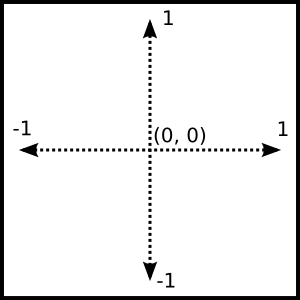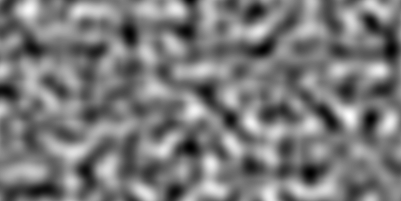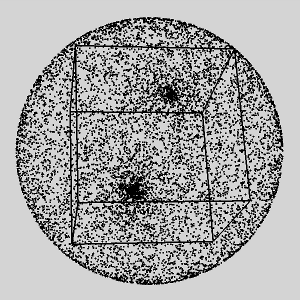nullprogram.com/blog/2013/06/10/
On several occasions over the last few years I’ve tried to get into
OpenGL programming. I’d sink an afternoon into attempting to learn it,
only to get frustrated and quit without learning much. There’s a lot
of outdated and downright poor information out there, and a beginner
can’t tell the good from the bad. I tried using OpenGL from C++, then
Java (lwjgl), then finally JavaScript (WebGL). This
last one is what finally stuck, unlocking a new world of projects for
me. It’s been very empowering!
I’ll explain why WebGL is what finally made OpenGL click for me.
Old vs. New
I may get a few details wrong, but here’s the gist of it.
Currently there are basically two ways to use OpenGL: the old way
(compatibility profile, fixed-function pipeline) and the new way
(core profile, programmable pipeline). The new API came about
because of a specific new capability that graphics cards gained years
after the original OpenGL specification was written. This is, modern
graphics cards are fully programmable. Programs can be compiled with
the GPU hardware as the target, allowing them to run directly on the
graphics card. The new API is oriented around running these programs
on the graphics card.
Before the programmable pipeline, graphics cards had a fixed set of
functionality for rendering 3D graphics. You tell it what
functionality you want to use, then hand it data little bits at a
time. Any functionality not provided by the GPU had to be done on the
CPU. The CPU ends of doing a lot of the work that would be better
suited for a GPU, in addition to spoon-feeding data to the GPU during
rendering.
With the programmable pipeline, you start by sending a program, called
a shader, to the GPU. At the application’s run-time, the graphics
driver takes care of compiling this shader, which is written in the
OpenGL Shading Language (GLSL). When it comes time to render a frame,
you prepare all the shader’s inputs in memory buffers on the GPU, then
issue a draw command to the GPU. The program output goes into
another buffer, probably to be treated as pixels for the screen. On
it’s own, the GPU processes the inputs in parallel much faster than a
CPU could ever do sequentially.
An very important detail to notice here is that, at a high level,
this process is almost orthogonal to the concept of rendering
graphics. The inputs to a shader are arbitrary data. The final
output is arbitrary data. The process is structured so that it’s
easily used to render graphics, but it’s not strictly required. It can
be used to perform arbitrary computations.
This paradigm shift in GPU architecture is the biggest barrier to
learning OpenGL. The apparent surface area of the API is doubled in
size because it includes the irrelevant, outdated parts. Sure, the
recent versions of OpenGL eschew the fixed-function API (3.1+), but
all of that mess still shows up when browsing and searching
documentation. Worse, there are still many tutorials that teach the
outdated API. In fact, as of this writing the first Google result
for “opengl tutorial” turns up one of these outdated tutorials.
OpenGL ES and WebGL
OpenGL for Embedded Systems (OpenGL ES) is a subset of OpenGL
specifically designed for devices like smartphones and tablet
computers. The OpenGL ES 2.0 specification removes the old
fixed-function APIs. What’s significant about this is that WebGL is
based on OpenGL ES 2.0. If the context a discussion is WebGL, you’re
guaranteed to not be talking about an outdated API. This indicator has
been a really handy way to filter out a lot of bad information.
In fact, I think the WebGL specification is probably the
best documentation root for exploring OpenGL. None of the outdated
functions are listed, most of the descriptions are written in plain
English, and they all link out to the official documentation if
clarification or elaboration is needed. As I was learning WebGL it was
easy to jump around this document to find what I needed.
This is also a reason to completely avoid spending time learning the
fixed-function pipeline. It’s incompatible with WebGL and many modern
platforms. Learning it would be about as useful as learning Latin when
your goal is to communicate with people from other parts of the world.
The Fundamentals
Now that WebGL allowed me to focus on the relevant parts of OpenGL, I
was able to spend effort into figuring out the important stuff that
the tutorials skip over. You see, even the tutorials that are using
the right pipeline still do a poor job. They skip over the
fundamentals and dive right into 3D graphics. This is a mistake.
I’m a firm believer that
mastery lies in having a solid grip on the fundamentals.
The programmable pipeline has little built-in support for 3D graphics.
This is because OpenGL is at its essence a 2D API. The
vertex shader accepts something as input and it produces 2D vertices
in device coordinates (-1 to 1) as output. Projecting this something
to 2D is functionality you have to do yourself, because OpenGL won’t
be doing it for you. Realizing this one fact was what really made
everything click for me.

Many of the tutorials try to handwave this part. “Just use this
library and this boilerplate so you can ignore this part,” they say,
quickly moving on to spinning a cube. This is sort of like using an
IDE for programming and having no idea how a build system works. This
works if you’re in a hurry to accomplish a specific task, but it’s no
way to achieve mastery.
More so, for me the step being skipped is perhaps the most
interesting part of it all! For example, after getting a handle on
how things worked — without copy-pasting any boilerplate around — I
ported my OpenCL 3D perlin noise generator to GLSL.

Instead of saving off each frame as an image, this just displays it in
real-time. The CPU’s only job is to ask the GPU to render a new
frame at a regular interval. Other than this, it’s entirely idle. All
the computation is being done by the GPU, and at speeds far greater
than a CPU could achieve.
Side note: you may notice some patterns in the noise. This is because,
as of this writing, I’m still working out decent a random number
generation in the fragment shader.
If your computer is struggling to display that page it’s because the
WebGL context is demanding more from your GPU than it can deliver. All
this GPU power is being put to use for something other than 3D
graphics! I think that’s far more interesting than a spinning 3D cube.
Spinning 3D Sphere
However, speaking of 3D cubes, this sort of thing was actually my very
first WebGL project. To demonstrate the
biased-random-point-on-a-sphere thing to a co-worker (outside
of work), I wrote a 3D HTML5 canvas plotter. I didn’t know WebGL yet.
On a typical computer this can only handle about 4,000 points before
the framerate drops. In my effort to finally learn WebGL, I ported the
display to WebGL and GLSL. Remember that you have to bring your own 3D
projection to OpenGL? Since I had already worked all of that out for
the 2D canvas, this was just a straightforward port to GLSL. Except
for the colored axes, this looks identical to the 2D canvas version.

This version can literally handle millions of points without
breaking a sweat. The difference is dramatic. Here’s 100,000 points in
each (any more points and it’s just a black sphere).
A Friendly API
WebGL still three major advantages over other OpenGL bindings, all of
which make it a real joy to use.
Length Parameters
In C/C++ world, where the OpenGL specification lies, any function that
accepts an arbitrary-length buffer must also have an parameter for the
buffer’s size. Due to this, these functions tend to have a lot of
parameters! So in addition to OpenGL’s existing clunkiness there are
these length arguments to worry about.
Not so in WebGL! Since JavaScript is a type-safe language, the buffer
lengths are stored with the buffers themselves, so this parameter
completely disappears. This is also an advantage of Java’s lwjgl.
Resource Management
Any time a shader, program, buffer, etc. is created, resources are
claimed on the GPU. Long running programs need to manage these
properly, destroying them before losing the handle on them. Otherwise
it’s a GPU leak.
WebGL ties GPU resource management to JavaScript’s garbage collector.
If a buffer is created and then let go, the GPU’s associated resources
will be freed at the same time as the wrapper object in JavaScript.
This can still be done explicitly if tight management is needed, but
the GC fallback is there if it’s not done.
Because this is untrusted code interacting with the GPU, this part is
essential for security reasons. JavaScript programs can’t leak GPU
resources, even intentionally.
Unlike the buffer length advantage, lwjgl does not do this. You still
need to manage GPU resources manually in Java, just as you would C.
Live Interaction
Perhaps most significantly of all, I can
drive WebGL interactively with Skewer. If I expose shader
initialization properly, I can even update the shaders while the
display running. Before WebGL, live OpenGL interaction is something
that could only be achieved with the Common Lisp OpenGL bindings (as
far as I know).
It’s really cool to be able to manipulate an OpenGL context from
Emacs.
The Future
I’m expecting to do a lot more with WebGL in the future. I’m really
keeping my eye out for an opportunity to combine it with
distributed web computing, but using the GPU instead of the
CPU. If I find a problem that fits this infrastructure well, this
system may be the first of its kind: visit a web page and let it use
your GPU to help solve some distributed computing problem!